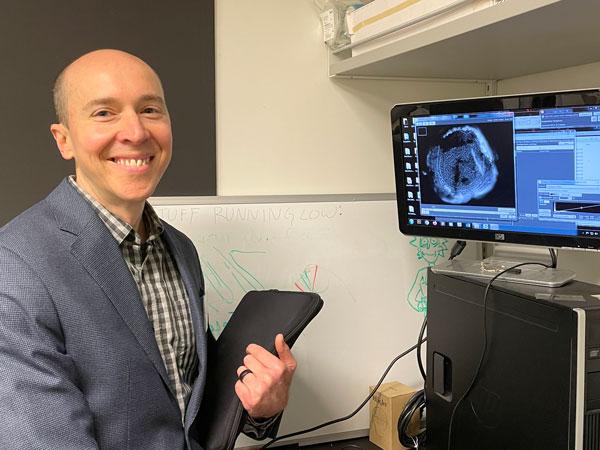
Harnessing the healing power of light
A daily dose of light is essential and beneficial to our health, according to Research Associate Professor Ethan Buhr, PhD. Dr. Buhr recently gave an inside look at his research at the South Lake Union campus, followed by a tour of the Vision Science Center.
Buhr said light affects us in nonvisual ways, and the fact that wavelengths of light are present outdoors but lacking in indoor lighting might impact health.
"Our eyes and bodies can detect light far beyond what our visual system sees. Our brains, skin and eye surface can all anticipate sunrise and sunset independently, using light triggers, because of a non-visual connection with our eyes,” Buhr told the group. “This helps coordinate healing pathways so our skin and eye surface can repair wounds while minimizing UV damage, scarring, and infection.”
Dr. Buhr said our behavior and cellular biology synchronize with the 24-hour light cycles produced by the daily rising and setting of the sun. This is achieved through non-visual photoreception or the activation of photoreceptors that function independently of vision. Circadian clocks are present in nearly every cell. To synchronize sleep-wake cycles, our retinas transmit light information to our brain's central circadian clock using rods, cones and intrinsically photoreceptive ganglion cells.
The Buhr Lab in the Vision Science Center at South Lake Union has identified additional unique photoreceptors, called opsins, that allow for the cells within the retina to synchronize with sunlight. These photoreceptors are separate from visual photoreceptors, like an extra eye for the retina itself. The synchronization of circadian clocks within the retina contributes to the retina’s response to photodamage and the long-term health of the tissue.
In future studies, his laboratory will study how opsins’ input to the brain controls these seasonal changes and how this influences the rhythms of our internal organs.
Outside of the retina, the Buhr Lab is also studying the role of non-visual photoreceptors in other areas exposed directly to light, such as the cornea and skin. Violet-light-sensitive photoreceptor cells are induced in response to injury. Once active, these cells activate pathways related to the synchronization of wound-healing mechanisms. An important next step is understanding how the signal is transmitted among the cells.
Learn more about Dr. Buhr's research on the Department website.
An Illinois native, Dr. Buhr earned his Ph.D. in neuroscience at Northwestern University. He completed his postdoctoral training at the UW with Bucey Chair Dr. Russell Van Gelder. He joined the faculty in 2015. Dr. Buhr lives in Seattle with his wife and two children.
